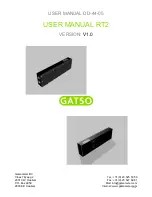
15
9. Technical
Specifications
Model
KAPSCH Capri125
PLUS
Speaker
1 broadband speaker,
3 inches
Frequency response
80 Hz–16 KHz
(–10 dB)
Amplifier
Class D,
10 W × 1 channel
Harmonic distortion
< 10 %
Signal-to-noise ratio
> 75 dB(A)
FM Frequency Range
87,5 MHz to 108 MHz
DAB Frequency Range 174 MHz to 240 MHz
Playback Mode
Bluetooth/AUX-IN/FM/
DAB/Internet Radio/
Spotify/Music player
Adapter
18 V = 0.1 A
Battery
Lithium battery,
2200 mAh, 11.1 V
Power consumption
at standby
with network < 2.5 W
without network > 1 W
Dimensions
222.7 mm × 155.4 mm
× 73 mm
Bluetooth
Version V2.1+ EDR
Maximum HF trans-
mission power
< 15 dBm
Frequency bands
2,402 MHz–2,480 MHz
Wi-Fi
Supports 802.11 b/g/n
– WEP, WPA, WPA2
encryption
Kapsch TrafficCom AG hereby declares that this
device complies with the fundamental requirements
and other relevant provisions of Directive 2014/53/
EU. The complete text of the EU conformity declara-
tion can be found at the following address:
www.kapsch.net/capri125
This device complies with Part 15 of the FCC regu-
lations. Its operation is subject to the following two
conditions:
(1)
This device may not cause harmful interference.
(2)
This device must accept any interference
received, including interference that may cause
undesired operation. Changes or modifications
not expressly approved by the party responsible
for compliance could void the user’s permission
to operate the device. This device was tested and
complies with the limits for Class B digital devices
pursuant to Part 15 of the FCC regulations. These
limits are designed to provide reasonable protection
against harmful interference in a residential com-
plex. This device generates, uses, and can radiate
high frequency energy and, if not installed and used
in accordance with the instructions, may cause
harmful interference to radio communications.
However, there is no guarantee that no interference
will occur in a particular installation. If this device
does cause harmful interference to radio or televisi-
on reception, which can be determined by turning
the equipment off and on, the user is encouraged to
try to correct the interference through one or more
of the following measures:


































